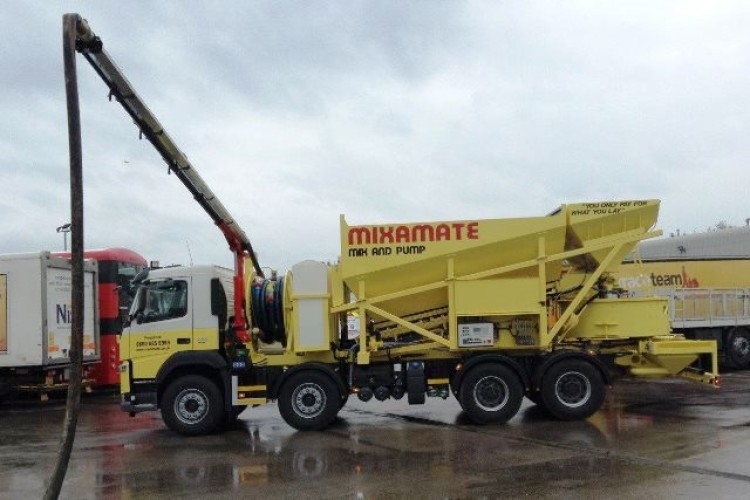A 10-year transition period has been granted to bring volumetric concrete mixers into line with regular HGVs.
The Department for Transport has spent three years consider the anomalous regulatory regime of volumetric concrete mixers (which it calls mobile concrete batching plants). Although they are mounted on heavy goods vehicles (HGVs), they are categorised as engineering plant rather than heavy goods vehicles. The justification for this is that they supposedly spend more time on construction sites off-highway than on the road.
However, transport minister Jesse Norman MP has now set out the future regulatory regime for volumetric concrete mixers.
Among those campaigning for reform had been the Mineral Products Association (MPA). It welcomed the decision to bring regulations for volumetric concrete mixers gradually into line with other HGVs.
Currently Volumetric operators and drivers are able to operate significantly outside the normal HGV rules, with no operator licence requirement, no application of drivers’ hours or working time rules, no requirement for HGV licences, and no effective vehicle weight limits – with four-axle rigid volumetrics often being loaded well in excess of 40 tonnes compared with the equivalent 32 tonne weight limit for HGVs, according to the MPA.
The DfT’s latest and previous announcements mean that volumetric operators will require operator licences and volumetric drivers will have to work to EU drivers’ hours and working time rules from September this year. Volumetric concrete mixers will also be subject to HGV testing requirements, unlike all terrain cranes which remain exempt. The minister’s decision to allow existing volumetics to operate under a temporary regime to up to March 2028 at the latest is a longer transition period than MPA had been seeking, but the package of measures announced means that government has recognised that there is no underlying justification for a more limited regulatory regime for volumetric concrete mixers, the MPA said, and that the current regulatory divergence between volumetrics and truckmixers needs to be closed.
The DfT has also accepted MPA’s view that there is no case for the previously proposed option of setting up a new separate regulatory regime for volumetric concrete mixers which would have embedded their ability to operate to higher weights than equivalent HGVs. This proposal has now been formally dropped.
MPA executive director Jerry McLaughlin said: “It is very positive that after many years of lax regulation of volumetric concrete mixers, transport minister Jesse Norman MP and officials are now taking action which will bring the regulation of volumetric concrete mixers in line with other HGVs. We would have preferred a shorter transition period for vehicle weights but the policy direction is now clear and significant regulatory convergence will start in September this year. The minister’s decisions are a victory for road safety and common sense.”
The minister’s full statement:
In December 2017 we announced a number of decisions in relation to mobile concrete batching plant (MCBP, also referred to as volumetric concrete mixers).

Their operation will come under the goods vehicle operator licensing regime from 1 September 2018. Compliance with the rules, including with the drivers’ hours and tachograph rules, will be enforced by the Driver and Vehicle Standards Agency.
We also announced that we would put in place a temporary arrangement in relation to MCBP weights, to permit operation above the standard legal weight limits. This is in recognition of the fact that common practice in recent years has been for MCBP to be operated at higher-than- normal weights.
I sought views on the appropriate duration of such an arrangement, with a proposed range of between 7 and 10 years.
We have noted the representations received and that there is a wide spectrum of opinion on this question. Arguments were provided in relation to the cost and average lifecycle strategies relating to these vehicles. Based on the evidence provided, I consider that it is appropriate to institute a temporary weight regime for a period of 10 years. In particular, this will help reduce different impacts on MCBP operators with different fleet management models. The details of the regime, including practical information about how operators can obtain vehicles special orders, is set out in the Annex.
Similar arrangements will also be available during this period to operators of mobile concrete pumps.
I also asked for views on the MCBP industry proposal for an amendment to the “special types” rules that would enable MCBP to continue to operate outside standard legal gross vehicle weight limits, but within standard axle weights, in order to maintain similar payloads to current operations.
Having considered the views expressed, I have decided not to progress such an arrangement.
Derogations from the standard weight limits are generally permitted exclusively for the carriage of indivisible abnormal loads or equipment. There is no compelling case to permit such a derogation for the carriage of concrete constituents.
MCBP operating weights should, at the end of the temporary 2017 arrangement outlined above, converge on the legal weight limits applicable to other heavy goods vehicles.
Got a story? Email news@theconstructionindex.co.uk



